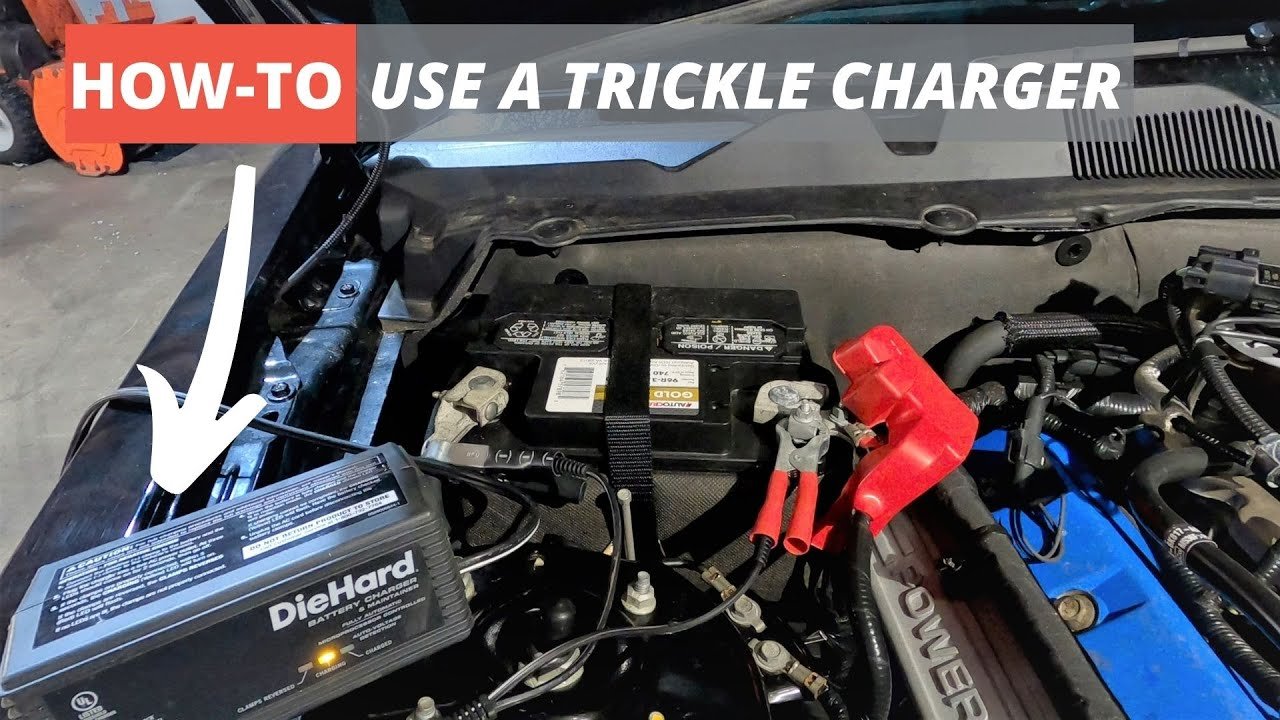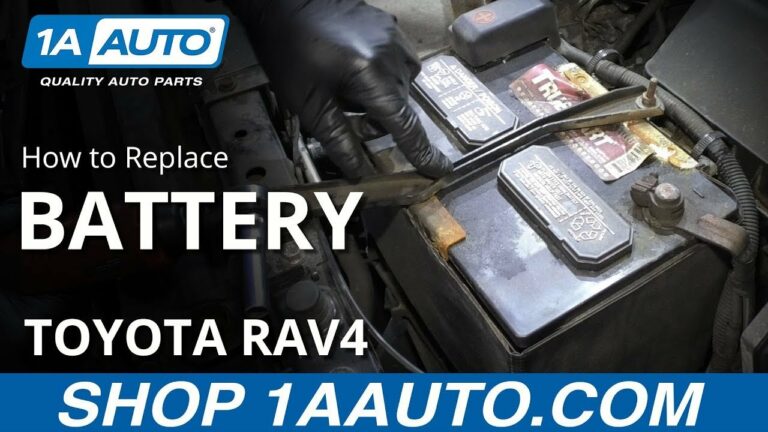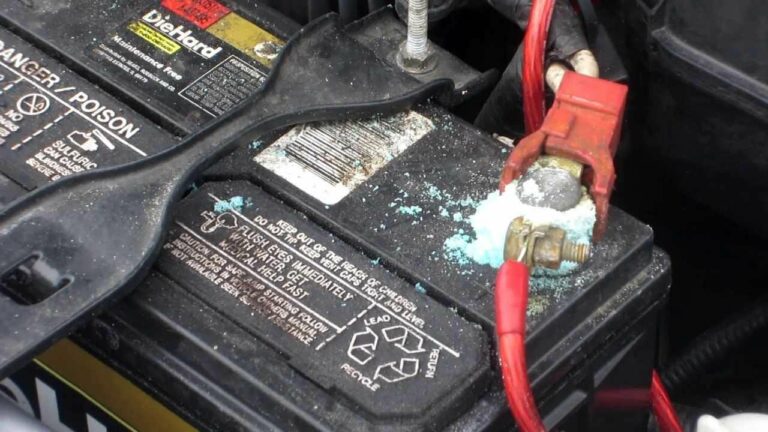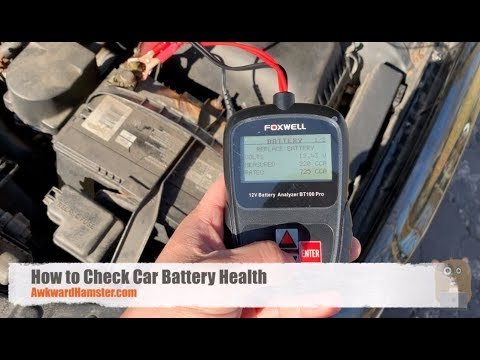Ultimate Guide: How To Charge A Car Battery With A Trickle Charger
Looking to charge a car battery using a trickle charger? You’ve come to the right place! In this article, we’ll walk you through the process step-by-step, ensuring that you can get your car back on the road in no time. No need for complicated techniques or expensive equipment – a trickle charger is a simple and efficient solution. So, let’s dive in and learn how to charge a car battery using a trickle charger.
How to Charge a Car Battery Using a Trickle Charger?
Car batteries play a crucial role in the overall performance and functionality of a vehicle. However, there may be instances when your battery loses its charge and requires recharging. One effective method to recharge a car battery is by using a trickle charger. A trickle charger is a device that supplies a low, constant current to the battery over an extended period. This article will guide you through the process of charging a car battery using a trickle charger, providing step-by-step instructions, safety precautions, and tips to ensure a successful recharge.
Understanding Trickle Chargers:
Trickle chargers, also known as maintenance chargers or float chargers, are designed to provide a slow and steady flow of electrical current to a battery. Unlike conventional chargers, which deliver a high current for a short duration, trickle chargers offer a low amperage charge continuously. This slow charging process helps prevent overcharging and prolongs the life of the battery.
How Do Trickle Chargers Work?
Trickle chargers are typically connected to a power source and directly to the battery. They operate using a voltage regulator to monitor and adjust the charging voltage. Once connected, the trickle charger supplies a small amount of current to the battery, compensating for any self-discharge and keeping the battery charged to its optimal level.
Benefits of Using a Trickle Charger
Using a trickle charger offers several advantages, including:
- Longer battery life: Trickle charging helps prevent sulfation, a common battery problem that occurs when lead sulfate crystals build up, reducing overall capacity.
- Convenience: Trickle chargers can be left connected for extended periods without the risk of overcharging, making them ideal for long-term storage or seasonal vehicles.
- Maintenance-free operation: Once connected, trickle chargers automatically monitor and adjust the charge to keep the battery at its optimal level.
- Cost-effective: By extending the battery’s lifespan, using a trickle charger can save you money by reducing the frequency of battery replacements.
Steps to Charge a Car Battery Using a Trickle Charger:
Charging a car battery with a trickle charger is a straightforward process. Follow the steps below to ensure a safe and effective recharge:
Step 1: Gather the Necessary Materials
Before getting started, gather the following materials:
- A trickle charger suitable for your battery type.
- A pair of safety goggles and gloves for protection.
- A clean and well-ventilated workspace.
- A battery hydrometer (optional but useful for checking battery condition).
Step 2: Prepare for the Charging Process
To begin the charging process:
- Ensure the vehicle’s engine and all electrical devices are turned off.
- Locate the battery in the engine compartment.
- Inspect the battery for any signs of damage, leaks, or corrosion. If present, consider professional assistance or battery replacement.
- Verify the battery’s voltage using a voltmeter. Trickle chargers are typically designed for 12-volt batteries, so ensure yours matches this rating.
Step 3: Connect the Trickle Charger
Follow these steps to connect the trickle charger:
- Identify the positive (+) and negative (-) terminals on the battery. The positive terminal is usually red, while the negative terminal is black.
- Connect the charger’s positive clamp to the positive terminal.
- Connect the charger’s negative clamp to the negative terminal.
- Ensure the clamps establish a secure and tight connection.
Step 4: Start the Charging Process
Once the charger is properly connected:
- Plug the charger into a power outlet.
- Switch on the charger as per the manufacturer’s instructions.
- Allow the charger to operate, maintaining a constant low current flow to the battery.
- Monitor the charging process regularly and check the battery’s temperature for any unusual heat.
Step 5: Disconnect and Test the Battery
After a sufficient charging period:
- Unplug the charger from the power outlet.
- Disconnect the charger’s clamps, starting with the negative (-) clamp followed by the positive (+) clamp.
- Clean any dirt or residue from the battery terminals using a battery terminal cleaner or a mixture of baking soda and water.
- Perform a battery test using a hydrometer or a battery load tester to ensure it has reached an acceptable charge level.
Safety Precautions and Tips:
When working with car batteries and trickle chargers, it’s essential to follow proper safety precautions. Here are some tips to ensure a safe charging process:
Ensure Adequate Ventilation
- Work in a well-ventilated area to prevent the buildup of potentially explosive gases emitted by the battery while charging.
- Avoid charging batteries near open flames, sparks, or sources of ignition.
- Keep windows or doors open to facilitate airflow during the charging process.
Wear Safety Gear
- Always wear safety goggles and gloves to protect your eyes and hands from corrosive chemicals present in the battery.
- Wearing long sleeves and pants can provide additional protection from accidental acid spills.
Follow Manufacturer’s Instructions
- Read and understand the trickle charger’s manual and follow the manufacturer’s instructions for safe use.
- Ensure the charger is compatible with your battery type and voltage rating.
Avoid Overcharging
- Do not leave the battery connected to the charger for an extended period, as it can lead to overcharging and damage the battery.
- Regularly monitor the charging process and disconnect the charger once the battery reaches an acceptable charge level.
Clean Battery Terminals
- Battery terminals can accumulate dirt, grease, and corrosion over time. Clean them periodically to maintain a good connection and prolong battery life.
- Use a battery terminal cleaner or a mixture of baking soda and water to remove any deposits.
How to Trickle Charge a Car Battery
Frequently Asked Questions
What is a trickle charger and how does it work?
A trickle charger is a device used to slowly charge a car battery over an extended period of time. It provides a low, continuous current to the battery, ensuring it remains topped up without overcharging. This gradual charging method helps extend the battery’s lifespan.
What are the advantages of using a trickle charger to charge a car battery?
Using a trickle charger offers several benefits. Firstly, it helps prevent the battery from losing charge over time, especially during periods of inactivity. Secondly, it helps maintain the battery’s health by providing a slow, controlled charge. Lastly, it eliminates the risk of overcharging the battery, which can lead to damage or reduced performance.
How do I connect a trickle charger to my car battery?
To connect a trickle charger, start by identifying the positive (+) and negative (-) terminals on your car battery. Then, make sure the charger is unplugged before connecting the red clamp to the positive terminal and the black clamp to the negative terminal. Ensure a secure connection and then plug in the charger.
Can I leave a trickle charger connected to my car battery for an extended period of time?
Yes, you can leave a trickle charger connected to your car battery for an extended period of time. Trickle chargers are designed to provide a low, constant charge, which is safe for long-term use. However, it’s essential to monitor the battery periodically and ensure the charger is functioning properly.
How long does it take to fully charge a car battery using a trickle charger?
The time it takes to fully charge a car battery using a trickle charger can vary depending on the battery’s capacity and the charger’s output. As a general guideline, it may take several hours to a full day or more to achieve a complete charge. It’s recommended to refer to the manufacturer’s instructions for more precise charging times.
Are there any safety precautions I should take when using a trickle charger?
When using a trickle charger, it’s important to follow a few safety precautions. Firstly, ensure the charger is compatible with your battery and that it is unplugged before starting the connection process. Additionally, handle the clamps with care and avoid crossing the positive and negative terminals. Lastly, keep the charger away from flammable or combustible materials during the charging process.
Final Thoughts
Charging a car battery using a trickle charger is an easy and effective way to maintain and rejuvenate its power. By connecting the charger to the battery and plugging it into a power source, the slow but steady current flow replenishes the battery’s energy over time. Regularly using a trickle charger can help prevent battery drain and extend its lifespan. However, it’s important to follow safety precautions and manufacturer’s instructions to ensure proper charging. With the right approach and equipment, anyone can successfully charge a car battery using a trickle charger, keeping their vehicle ready to hit the road.




